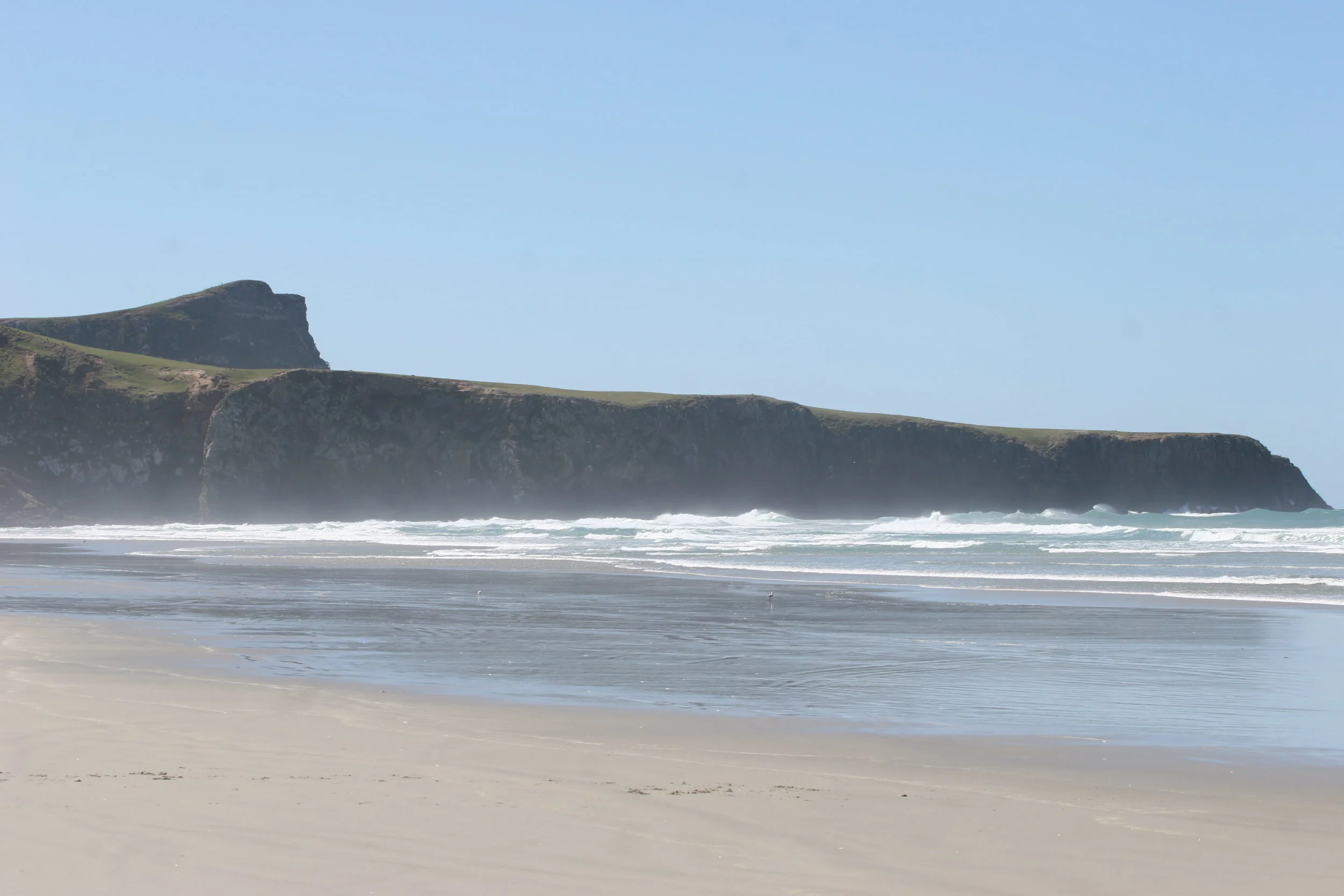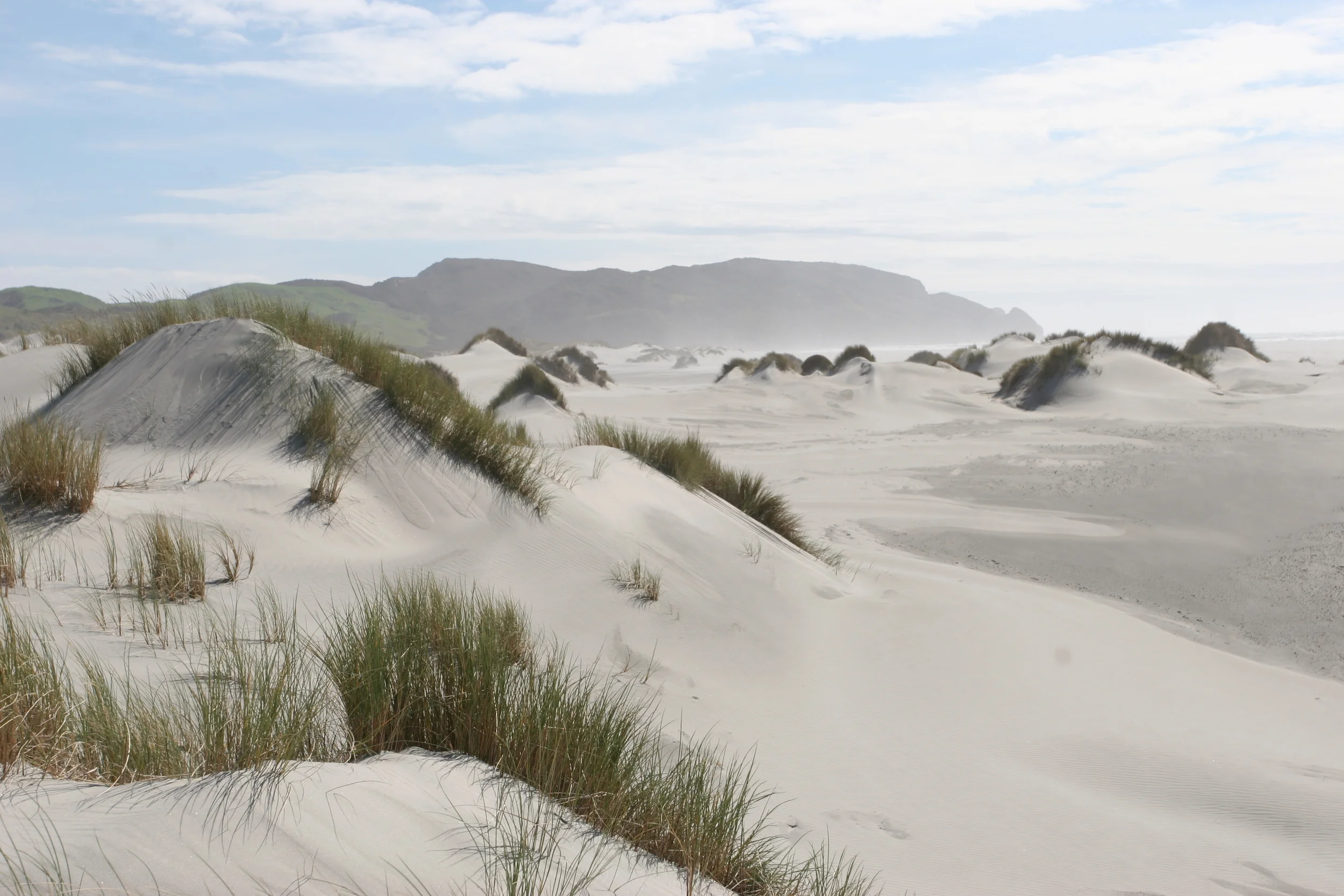While the entirety of New Zealand has a number of pristine beaches, only one beach has a unique off-shore man-made feature and that beach is Victory Beach on the Otago Peninsula. The beach is named for the SS Victory, which, in 1861, ran aground at the end of the beach when under the control of one George Hand (who was later found to be intoxicated at the time of the wreck). While the majority of the wreck was auctioned off during the nineteenth century, and is now absent from the beach, one item remains - one of the huge flywheels of the wreck, which remains affixed about ten feet from the shore, a giant steampunk relic of a long-lost time.
Pancake Rocks
From its northern tip to its southern stretches, the South Island of New Zealand has a number of unique geologic features like the Moreaki Boulders. While some of these locations require a bit of commitment to see, other features like the Pancake Rocks on the west coast of New Zealand are easily accessible. Further, as a whole, the west coast of New Zealand’s South Island is an area that, while it is isn't hidden, is wild as a whole. As a start, the west coast is one of the rainiest portions in the entirety of the island, with storms commonly coming off the Tasman Sea. It is also an area that in places, resembles a more tropical locale with pristine beaches, and has many sub-tropical rainforests that are in part, are protected in Paparoa National Park.
Moeraki Boulders
One of the most unique sights in New Zealand lies along the East Coast of the South Island, in the Otago region. The Moeraki Boulders are a series of spherical boulders that appear randomly placed along the tideline. With unique and distinctive lines crisscrossing their surface, they look like something out of a science fiction novel, or, in line with New Zealand’s spate of recent high fantasy movies, dragon’s eggs. The scientific explanation for the boulders is that they are concretions (hard, compact items that are formed by precipitation of mineral cement that are found in sedimentary rocks) that have been eroded for the last sixty-five million years. However, despite the geologic and scientific explanation that exists, the Moeraki Boulders also have a cultural and mythological explanation as well.
Truman Track
The West Coast of New Zealand’s South Island is known for two things: rain, and epic coastal views. While rainfall amounts vary in the Westland, some areas receive as much as 18 meters of rain (54 feet!) a year. As a result of this rain, much of this area is heavily forested with swamps in certain areas. In addition to the fantastic forests that cover the West Coast, the views along the coastline never fail to impress, irrespective of whether there is precipitation or not. One of the easiest, and best hikes in the region, the Truman Track, combines much of the best features of the area, along with a stunning beach, and is a must-do hike for visitors to the region.
Farewell Spit
After all of the Lord of the Rings movies, and the Hobbit movies, much is made of New Zealand being exactly like Middle Earth, with rolling green hills, high snow-capped mountains, and lush forests and roaring rivers. While New Zealand has all of these things and more, it also has an area that appears to be lifted straight from the Sahara, or from one of the deep deserts of the world. That place is the Farewell Spit, a fifteen mile (25km) stretch of land that extends from the northern section of the South Island of New Zealand. And for those willing to explore it, the Farewell Spit features sand dunes, blowing sand storms, long stretches of sandy coast, wildlife, and hidden pools of water.






